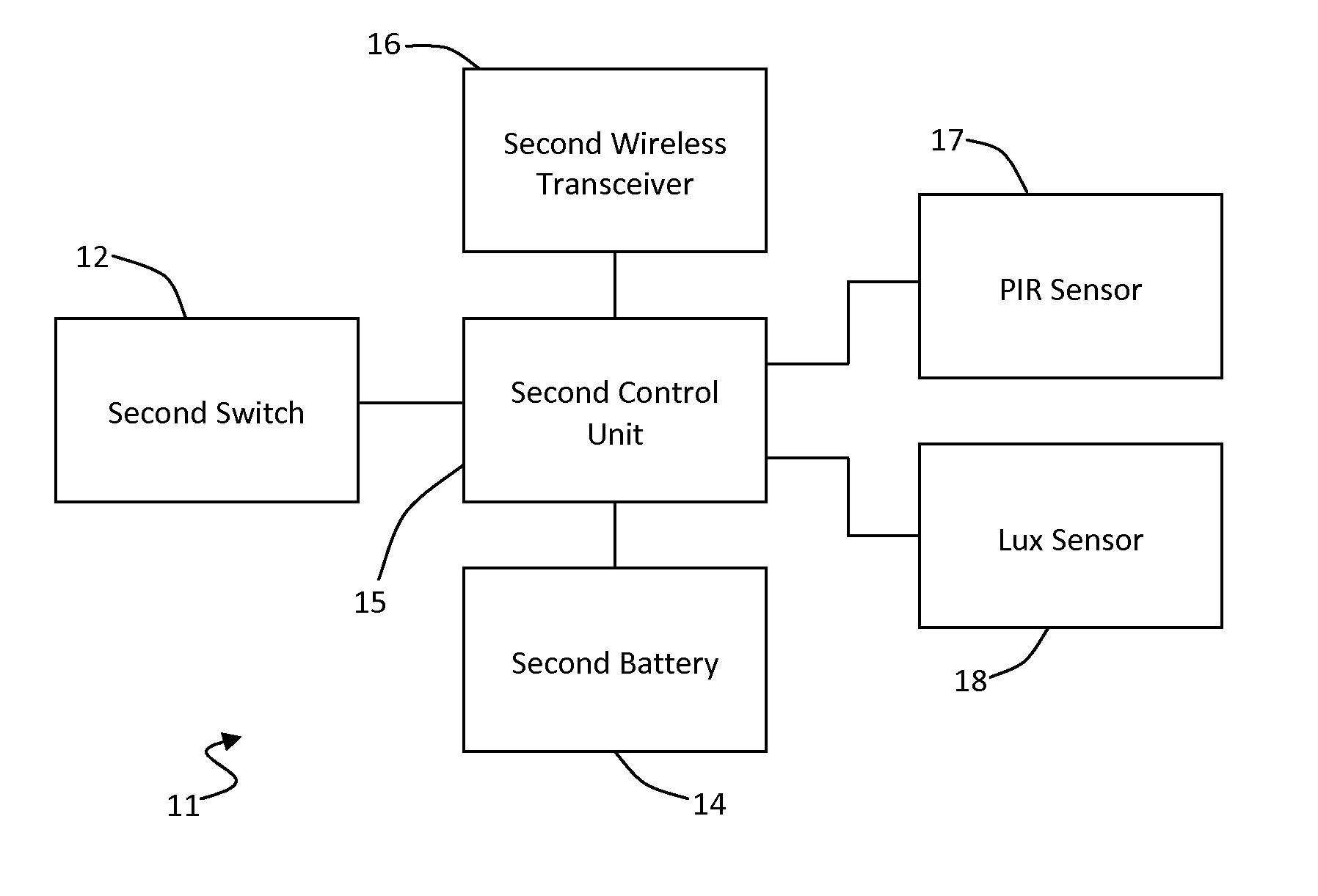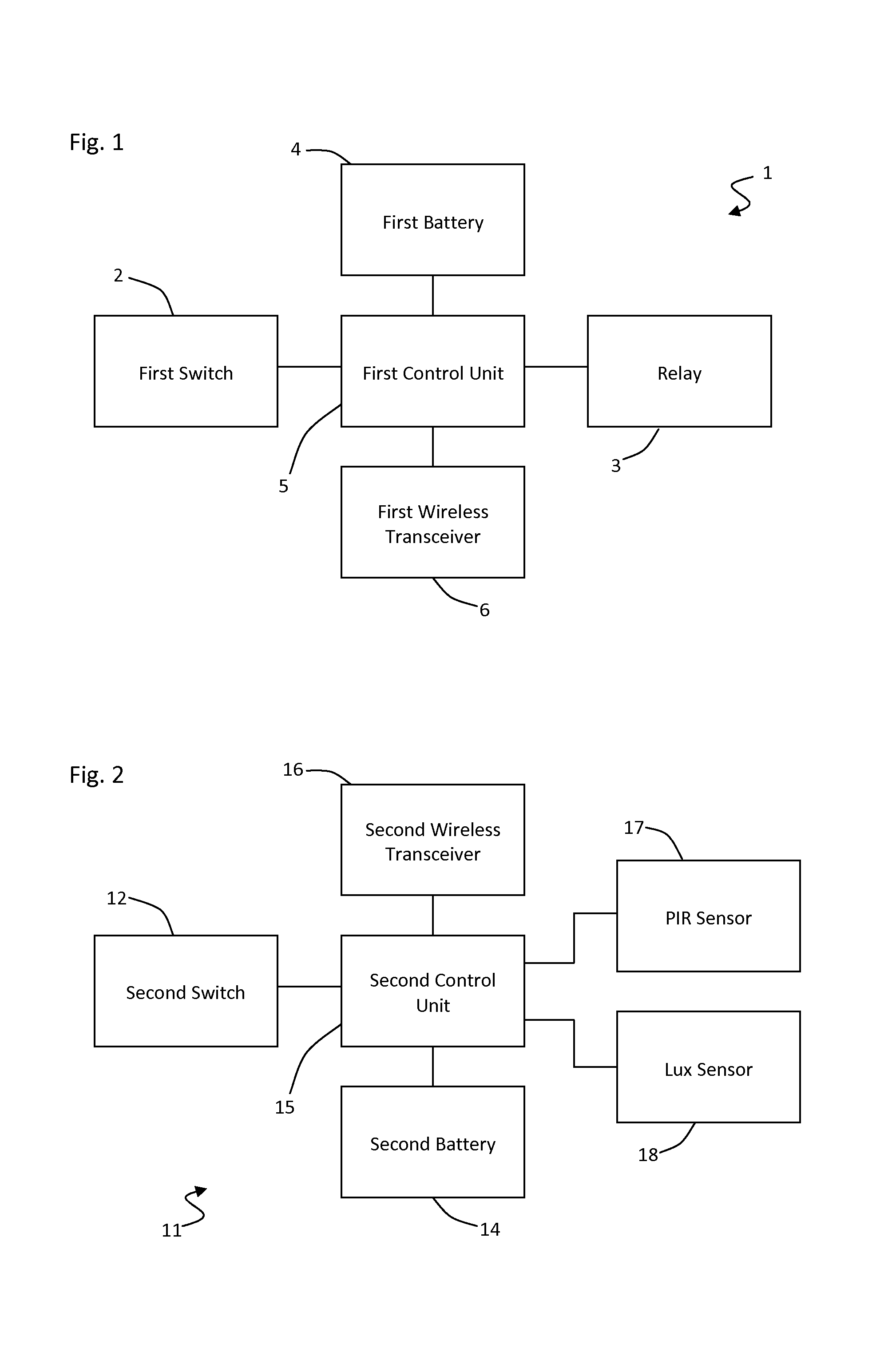Lighting Control System
a control system and light technology, applied in the field of light control system, to achieve the effect of reducing power consumption, less power, and reducing the power demand of the first sensor devi
- Summary
- Abstract
- Description
- Claims
- Application Information
AI Technical Summary
Benefits of technology
Problems solved by technology
Method used
Image
Examples
Embodiment Construction
[0041]FIG. 1 shows a lighting controller 1 according to the invention. The lighting controller 1 is suitable for use in place of an existing wall mounted light switch, and comprises a user operable switch 2 on the front of the device and an internal relay device 3. The relay device 3 is used to control the supply of power to at least one light, therefore the relay device 3 can be used to make a connection and so turn the lights on, or break the connection to turn the lights off.
[0042]The lighting controller 1 further comprises a first battery 4 and a first control unit 5. The first control unit 5 draws power from the first battery 4 to operate. The first battery 4 is a rechargeable battery which derives its charge current through the lighting load on the relay device 3. As such, when the first battery 4 is depleted through use, the first control unit 5 can cause the first battery 4 to recharge automatically, without the need for the first battery 4 to be removed or replaced. However...
PUM
 Login to View More
Login to View More Abstract
Description
Claims
Application Information
 Login to View More
Login to View More - R&D
- Intellectual Property
- Life Sciences
- Materials
- Tech Scout
- Unparalleled Data Quality
- Higher Quality Content
- 60% Fewer Hallucinations
Browse by: Latest US Patents, China's latest patents, Technical Efficacy Thesaurus, Application Domain, Technology Topic, Popular Technical Reports.
© 2025 PatSnap. All rights reserved.Legal|Privacy policy|Modern Slavery Act Transparency Statement|Sitemap|About US| Contact US: help@patsnap.com



